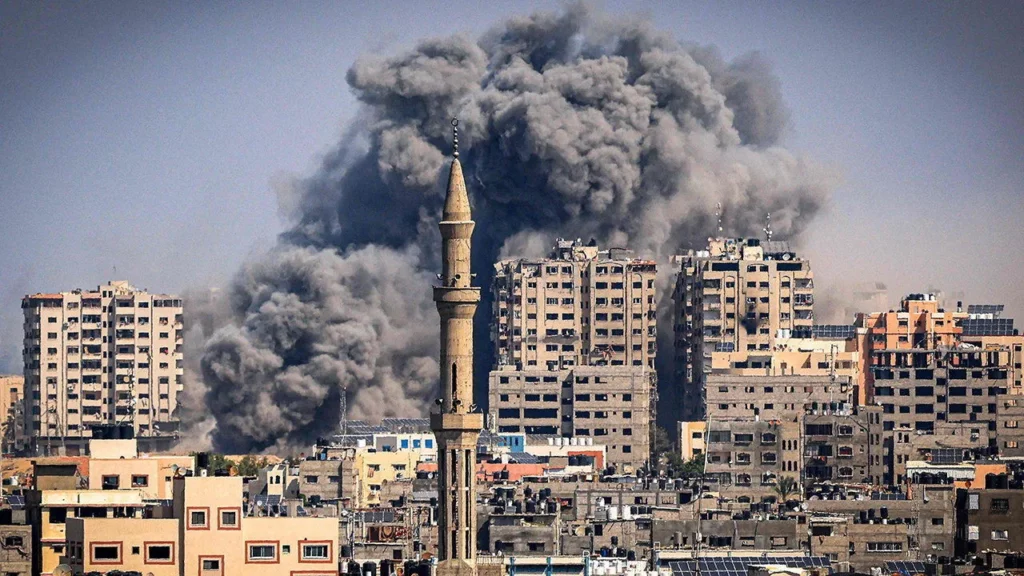INTRO:
The Israeli-Palestinian conflict is a complex and deeply rooted political and territorial dispute that has spanned decades. This article aims to provide a comprehensive analysis of the causes, impacts, and potential solutions to this ongoing conflict. By examining historical events, geopolitical dynamics, and the humanitarian consequences, we can gain a deeper understanding of this multifaceted issue.

I. Historical Background:
To comprehend the Israeli-Palestinian conflict, we must delve into its historical roots. The origins of the conflict can be traced back to the late 19th century, with the Zionist movement seeking to establish a Jewish homeland in Palestine. This led to tensions and clashes between Jewish and Arab communities, culminating in the 1948 Arab-Israeli War and the subsequent establishment of the State of Israel. The displacement of Palestinians during this period created a refugee crisis, contributing to the grievances that persist to this day.
II. Causes of the Conflict
Multiple factors have contributed to the Israeli-Palestinian conflict. These include:
- Territorial Disputes: The contestation over land and competing claims to Jerusalem, the West Bank, and the Gaza Strip have been central issues in the conflict.
- Security Concerns: Ensuring the safety and well-being of both Israeli and Palestinian populations has been a crucial challenge, with acts of violence and terrorism exacerbating tensions.
- Settlements and Occupation: Israeli settlements in the occupied territories have been a source of contention, as they are seen as an obstacle to the creation of a future Palestinian state.
- Water and Resources: The scarcity of vital resources, particularly water, has intensified competition and socio-economic disparities between Israelis and Palestinians.
- Political and Leadership Factors: The lack of trust, failed peace negotiations, and leadership disputes on both sides have hindered progress toward a resolution.
III. Impacts on the Region:
The Israeli-Palestinian conflict has had far-reaching consequences, affecting not only the Israelis and Palestinians but also the broader Middle East region. Some notable impacts include:
- Humanitarian Crisis: The conflict has resulted in significant human suffering, including casualties, displacement, and restricted access to basic services for Palestinians.
- Geopolitical Dynamics: The conflict has shaped regional alliances and rivalries, with neighboring countries and global powers becoming involved in various capacities.
- Radicalization and Extremism: The protracted conflict has provided fertile ground for radical ideologies and extremist groups to emerge, posing security risks both locally and internationally.
- Economic Implications: The conflict has hindered economic development and stability in the region, impacting trade, investment, and tourism.

IV. Potential Solutions:
Finding a viable solution to the Israeli-Palestinian conflict is a complex task. Some potential avenues for progress include:
- Two-State Solution: This approach envisions the establishment of an independent and sovereign Palestinian state alongside Israel, based on mutually agreed borders and security arrangements.
- Negotiations and Diplomacy: Engaging in meaningful and inclusive dialogue, with the support of the international community, is crucial for bridging gaps and building trust between the parties.
- Addressing Core Issues: Resolving matters such as the status of Jerusalem, the fate of refugees, and the future of Israeli settlements is vital for a sustainable peace agreement.
- Confidence-Building Measures: Implementing practical steps to improve living conditions, enhance economic cooperation, and foster people-to-people interactions can help build trust and reduce hostility.
Conclusion:
The Israeli-Palestinian conflict remains a deeply entrenched and challenging issue with profound implications for the parties involved and the broader region. By understanding its causes, impacts, and potential solutions, we can foster dialogue, promote peacebuilding efforts, and work towards a just and lasting resolution. Achieving a comprehensive and sustainable peace will require the commitment and cooperation of all stakeholders, backed by international support and a genuine desire for reconciliation.